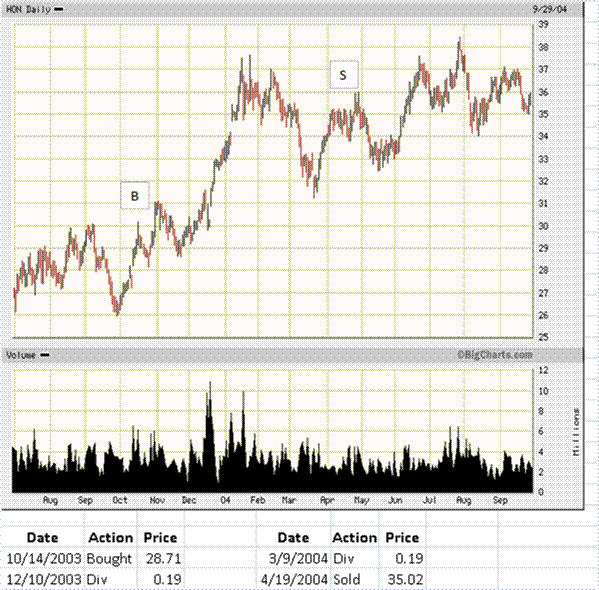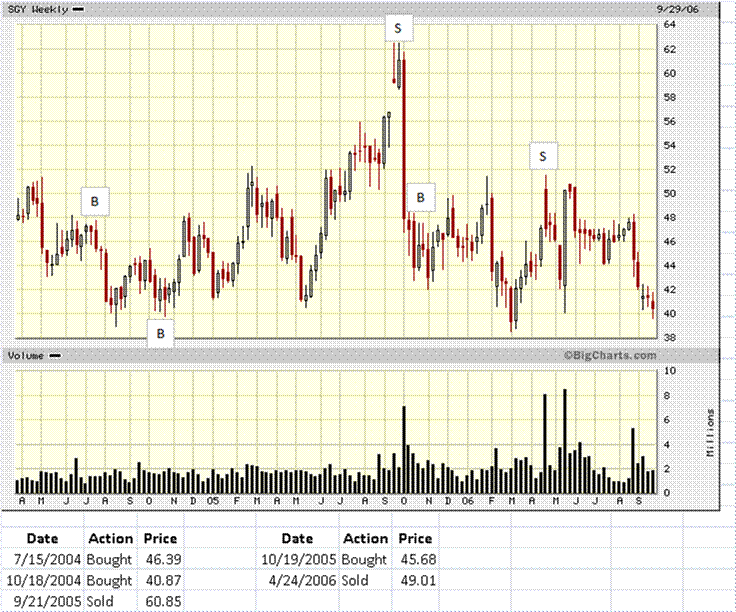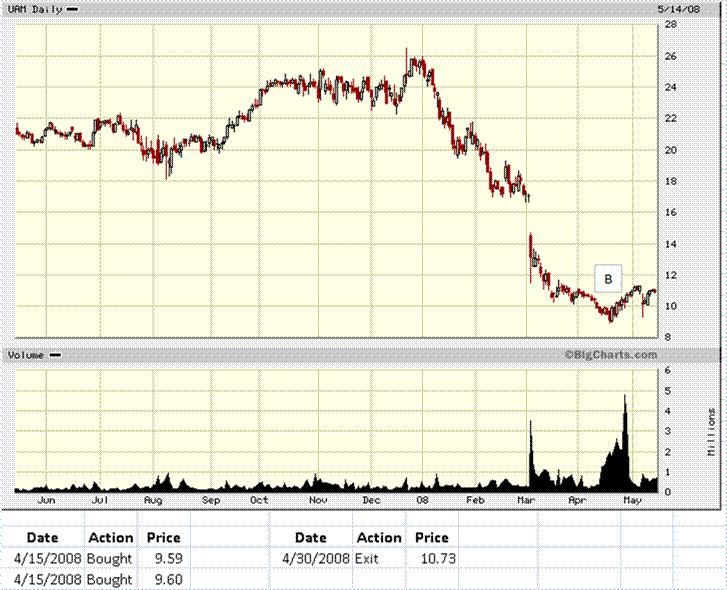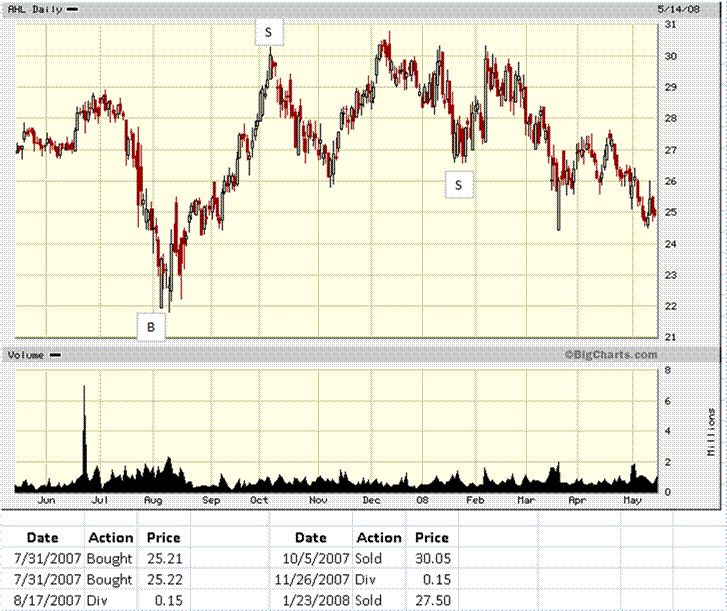Okay, same drill as my pieces for my worst losses, but this time I chose the ten most average investments of mine in terms of dollars earned. Remember, one of my key disciplines is rebalancing.
Honeywell

Honeywell was short and simple. I felt it was out of favor, and I bought some. Six months later, I had cheaper stocks to buy, so Honeywell was gone.
Stone Energy

Stone Energy was a weird one. As you will note, the initial purchase and final sale prices aren’t that much different. Interim trading made a difference to the total return.
The stock popped after hurricane Katrina, and sagged quickly thereafter on an audit of proven reserves that came up light. The rebalancing discipline was a big help here.
Dow Chemical

Dow Chemical has two stories. First, dividends are valuable. Second, rebalancing adds value. Dow was a cheap stock that did not get respect, but I still made decent money off of its gyrations, and dividends.
Universal American Financial Corporation

This one is too early to tell. I still own it. Sometimes investments make significant money out of the gate. That is not often, in my experience. This is a little individual and group healthcare company that has gotten smashed over the merger integration. That is a relatively stable business, but small healthcare players have been harmed in the past. Insider buying here is a plus.
Aspen Insurance Holdings

Aspen was a relatively cheap reinsurer. I bought some and sold a chunk into a runup, and sold the rest as I concluded that I had better places to put money.
Summary of Part I
- Rebalance your portfolio regularly to fixed weights.
- Dividends matter.
- Buy cheap.
If done consistently, these principles will raise your overall return, and reduce overall risk. Pretty good performance from a bunch of average stocks.
Full disclosure: long UAM

John Mauldin has an article on Minyanville entitled “Why Investors Fail” that I think you would like if you haven’t read it. I think it should be required CFA and CFP reading.